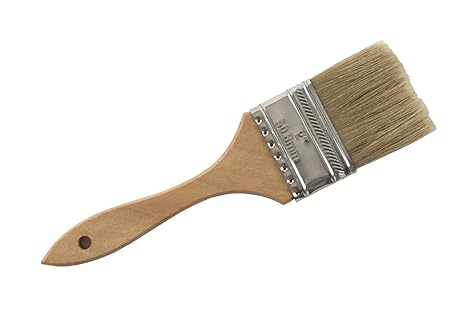When I started painting about a year ago, I knew that I was not allowed to use any brush made of human hair (Islam forbids it to the best of my knowledge). Human hair was very common for soft brushes a few years ago so I took extra pre-cautions and made sure I didn’t buy anything that contained human hair.
Until recently, what I did not know was that brushes made of pig hair are just as common and sought after by professional artists. Whenever an artist referred to a “hog bristle brush” I thought hedgehog hair was used in making that brush (don’t ask me why). You can imagine how disturbed I was when I realized hog bristle actually made of pig hair. “Hog” actually referred to pig.
Anything that says “bristle brush”, “natural bristle brush”, “hog bristle brush”, “china bristle”, “chungking”, etc is made from pig hair
After having learned this, I began to wonder what else is made of pig hair. My investigation surprised me even more. All cheap brushes that claim to be made of “natural bristles” are made from pig hair. Same goes for “bristle” brush. Even more shocking to me was that food brushes are also made of (you guessed it) pig hair. We don’t use brushes to glaze anything in my home but I wonder if there are other Muslims who do (and if they know what their brush is made out of).
I will leave it up to you to figure out if Islam allows using brushes made of pig hair for painting (or to brush your head).
Even if using brushes made of pig hair is allowed for external purposes (painting, combing hair, etc) I would not want to use a food brush made made of “natural bristles” to glaze my food. I have learned how to identify if a brush is made of natural bristles so I can avoid them (maybe I will make another post with details) but for the masses that don’t – be careful :). Use synthetic brushes as much as you can.

(Natural bristle food brush)
Leave a Reply